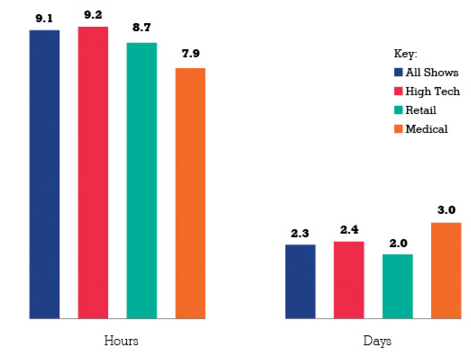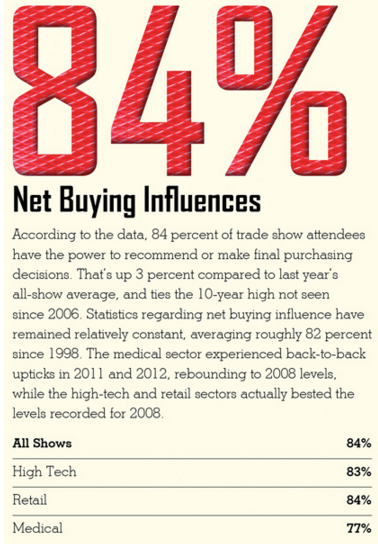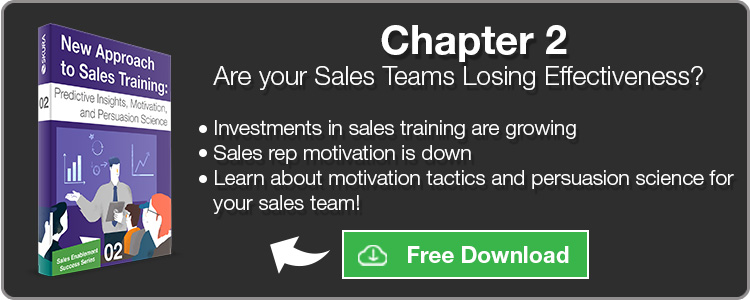Trade shows have been a top B2B marketing strategy. While the economics of trade shows experienced a decline during the 2008 financial crisis, rebounding interest and strong growth among exhibitors is sparking new discussions into trade-show lead generation.
Today we examine the current state, opportunities, and challenges of trade shows, and lay a framework for discussion around trade show lead generation and sales acceleration practices.
The importance of closing a sale at a trade show is declining, especially with the growth of content marketing and a self-directed decision journey. Empowered buyers desire to develop their own journey, and to ‘discover’ their own needs along the path.
Steady declines in trade show value seem to have rebounded, and now many are butting heads on the topic of how best to deliver value during the trade show.
[RELATED CONTENT] If you’re unfamiliar with the four major trends influencing and conditioning the contemporary B2B buyer, click the link below for a FREE copy of our report.
The Value of Trade Shows
Trends to Consider
2012 marked a long-needed positive year for the trade show industry with exhibit audience quality and density numbers reaching heights not seen since 2006 (Source: ExhibitorOnline, 2012).
The amount of time a trade show attendee spends at a trade show is rising to new heights, and an overwhelming majority of exhibitors see unique value in using trade shows as a marketing channel.
- Trade show average daily attendance is on the rise:
- 8.3 hours/day in 2011;
- 8.6 hours/day in the prior 5 year average;
- 9.1 hours/day in 2012; (Source: ExhibitorOnline, 2012) and
- 9.5 hours/day in 2014. (Source: Statista, 2014)

(Image 1: 2012 Trade Show Attendence Figures)
- Trade show costs per interaction are below that of an in-office sales presentation:
- Trade show in-person interaction averages $142;
- Office in-person interaction averages $259 (Source: ExhibitorOnline, 2012); and
- 99% of exhibitors stated they found unique value in trade shows that aren’t provided by other marketing channels. (Source: BusinessExpoCenter, 2014)
Opportunities with Trade Shows
The opportunities for trade show exhibitors are immense, but sometimes hard to distinguish on a case by case basis. 92% of attendees stated that they visit trade shows to “see what’s new in the industry” (this was the top cited reason). Because of this, many visit trade shows once a year, or no more than once per industry per year.
Thus, the potential for lead generation at trade shows is higher:
- In 2012, 38% of attendees stated this was their first trade show for the year (Source: ExhibitorOnline, 2012); and
- In 2014, 50% of respondents stated they had not attended a trade show in the previous year (Source: BusinessExpoCenter, 2014).
Perhaps most importantly:
- 45% of attendees stated they have not attended any other trade show for this industry (Source: ExhibitorOnline, 2012).
How about trade show attendees, who are they?
- 46% of trade show attendees report being upper management or executive staff (Source: TSNN, 2013);
- 49% of trade show visitors stated they had an intention to buy (Source: Statista, 2014).

(Image 2: 2012 Buying Influence AND Purchase Intention are up)
In fact, both buying influence AND purchase intention have been up, with 84% of attendees citing they have the power to recommend, specify, or make a final purchase decision (Source: ExhibitorOnline, 2012). Meanwhile 51% of attendees reported that they requested a sales rep to visit their company after the show (Source: BusinessExpoCenter, 2014).
During your next trade show, half of your attendees could represent a valuable lead opportunity, or even a sale! These venues are a perfect benchmark for the effectiveness of your early-funnel mobile sales enablement strategies.
Challenges for Trade Show Exhibitors
With fewer than 1 in 3 attendees considered as “regulars”, there is a huge opportunity for vendors to make a lasting first impression, and earn a regular correspondence over the long term.
Trade show exhibitors must understand that many of the opportunities aren’t being capitalized on. Although 77% say they found at least one new supplier during their last trade show, 90% state that they have not been called upon once in the last 12 months since attending a show!
Few are effectively following up with leads after a trade show, meanwhile purchase intentions are on a steady rise. This leaves a very large gap for any vendor to exploit through effective lead capture and nurture tactics. This is especially true once you consider that 76% of executives at trade shows stated they asked for a price quote while at the show, and 81% felt that they could recall the vendors they interacted with at the show (Source: Statista, 2013).
Exhibitors are recognizing that making a sale at the show is a declining proposition, marking three updated strategic objectives for brands at trade shows today:
- Brand Awareness
- Lead Generation
- Relationship Building (Source: TSNN, 2013).
What does this all mean?
- Trade shows are increasing in value, and a near-majority of attendees at any trade show are new potential leads with appropriate authority.
- Buyer expectations/conditioning for an adaptive sales process are carrying over from the world of digital content marketing and now apply to a trade show interaction.
- Exhibitors are missing the mark on value, and there are still huge opportunities for delighting a buyer with a process that is seamless and enjoyable.
- Trade show exhibitors are aware of the need for a new approach, and those who master the right balance of trade-show sales presentation and communication tactics are positioned to leapfrog the competition in the area of lead generation and nurturing.
Netflix’ization of the Buyer Decision Journey
This is a concept we discussed earlier in our talk about sales objections for the contemporary buyer, and trade show metrics seem to be favoring this trend.
Netflix’ization is all about the preferred behaviour pioneered by Netflix. Buyers don’t have time for piecemeal interactions and intrusive distractions. Instead they set aside time for large sittings of engagement, like binging on digital content, and they want it to be relevant and contextual.
Trade shows are headed down this path it seems. Few are attending more than one shbow a year, and more are staying longer. Exhibitors need to apply digital content management thinking to make their exhibit not only worth binging on, but easy to binge on.
Strategies and Best Practices for Capturing Leads
In a next post I’ll follow up these numbers with some tactics and best practices to use when exhibiting at trade shows. I’ll hyperlink that blog HERE when it’s out.
Do these stats coincide with your trade show experience over the last few years? Are you seeing something different? Share your thoughts on our LinkedIn page.
[RELATED CONTENT] Why Sales Training Programs Fail to Respond to the Netflix’ized Decision Journey:
Businesses are investing billions in sales training, but decision journeys are getting longer, harder to predict, and more costly to service. Learn about how to implement one of two strategies outlined by Forrester, as well as 6 pillars for a more persuasive sales presentation.












